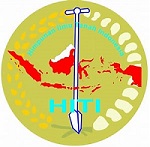PENGARUH MULSA BATANG JAGUNG DAN STRIP RUMPUT TERHADAP EROSI TANAH PADA LAHAN KERING
DOI:
https://doi.org/10.35791/se.21.3.2021.36688Keywords:
mulch, mulsa, grass strip, strip rumput, soil erosion, erosi tanah, dry land, lahan kering.Abstract
EFFECTS OF CORN STALK MULCH AND GRASS STRIPS TOWARD SOIL EROSION OF DRY LAND
Soil conservation has a very important role in the prospect of land development to overcome the problem of land degradation. This study aimed to determine the effects of corn stalk mulch and grass strip toward soil erosion of dry land. Study about some research data from Nurdin (2012) entitled "Combination of Soil Conservation Techniques and Its Effect on Corn Yield and Soil Erosion in Dry Land of Biyonga Sub-watershed, Gorontalo Regency", and Jaka (2017) entitled "Effect of the Treatments of Corn Stalk Mulch and Strip of Reinforced Terrace of Surface Runoff, Erosion and Farming Results" has been carried out on dry land farming of Keduang Sub-watershed, Bengawan Solo Watershed in Sendangsari Village, Batuwarno Sub-District, Wonogiri Regency were then analyzed descriptively by the researcher. Results showed that Biyonga Gorontalo Sub-watershed has an erosion value without treatment obtained from the calculations of USLE Method was 150.09 tons ha-1year-1, whereas in Keduang Solo Sub-watershed the value of soil erosion on untreated soil was 12.77 tons  ha-1year-1. The combination of given treatments was the provision of mulch and grass strips. The erosion category of both Biyonga and Keduang Sub-watersheds was classified as heavy, but with the application of vegetative soil conservation technology (mulch and grass strips) can reduce the level of land degradation even more and the rate of erosion occurs.
Downloads
Published
How to Cite
Issue
Section
License
Authors who publish in this journal agree to the following terms:
Authors hold their copyright and grant this journal the privilege of first publication, with the work simultaneously licensed under a Creative Commons Attribution License that permits others to impart the work with an acknowledgment of the work's origin and initial publication by this journal.
Authors can enter into separate or additional contractual arrangements for the non-exclusive distribution of the journal's published version of the work (for example, post it to an institutional repository or publish it in a book), with an acknowledgment of its underlying publication in this journal.
Authors are permitted and encouraged to post their work online (for example, in institutional repositories or on their website) as it can lead to productive exchanges, as well as earlier and greater citation of the published work (See The Effect of Open Access).




